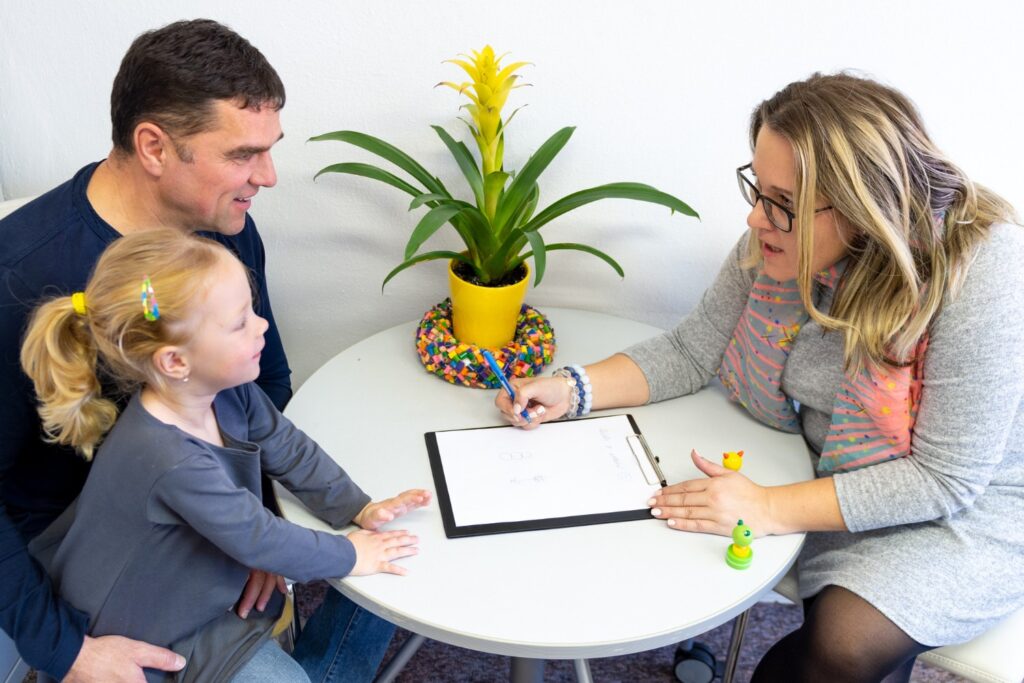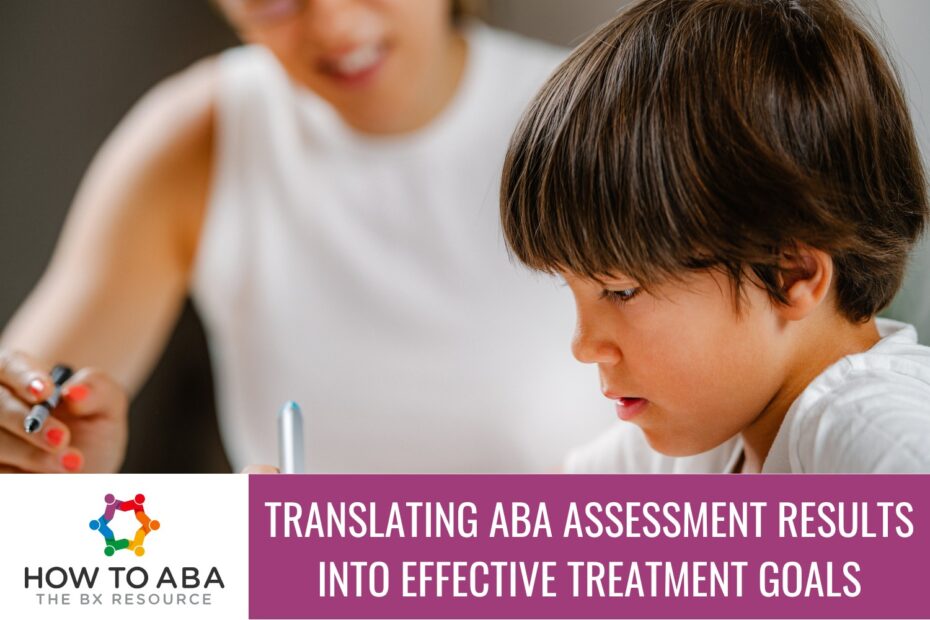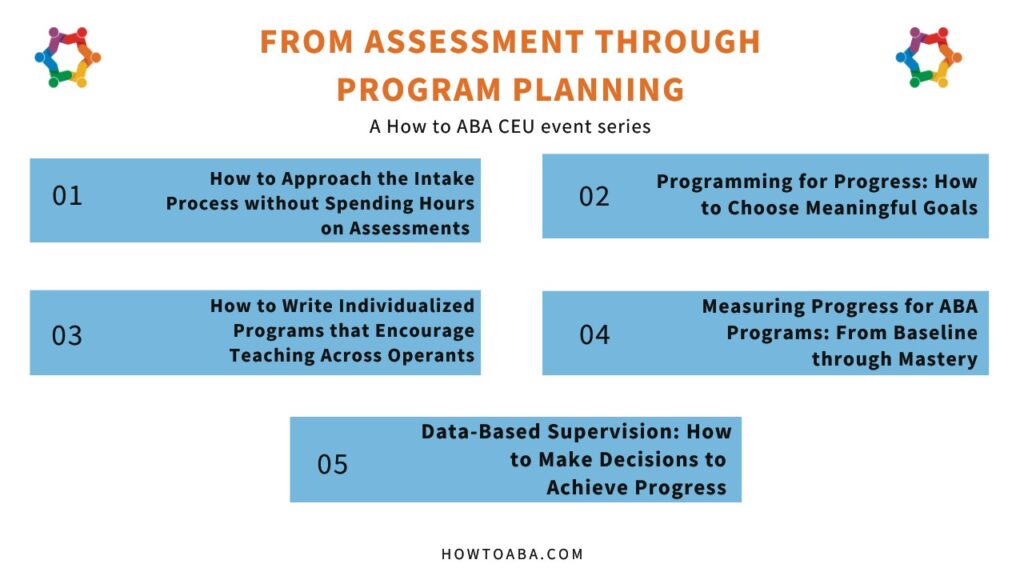As BCBAs, we’ve all been there – you’ve just wrapped up a comprehensive assessment, whether it’s the ABLLS-R, VB-MAPP, AFLS, or a tailored skills-based assessment, and now you’re staring at pages of data and wondering: “Now what?”
Assessment is critical; it gives us a roadmap of a learner’s strengths and areas for growth. But without intentional translation into meaningful treatment goals, it’s just a collection of scores and graphs. The real magic (and challenge) lies in bridging that gap: taking raw data and turning it into individualized, functional, and socially significant goals that truly impact a learner’s life. Here’s how to approach that translation with purpose.
1. Start With the Big Picture
Before diving into the granular data, take a step back and ask yourself: What matters most to this learner right now?
Is toilet training more urgent than labeling 50 animals?
Does the family want to focus on daily living skills over imitation tasks?
While assessments can point out possible areas to target, we have to prioritize what will make the biggest difference for the learner and their family. This is where clinical judgment – and collaboration – come into play.
At How to ABA, we recommend considering the functionality and social significance of a skill. A goal should not just check a box on an assessment; it should support the learner in accessing more of their world, reducing frustration, increasing independence, or building meaningful relationships.
2. Don’t Let the Assessment Dictate the Curriculum
Assessments are tools, not templates. They should inform, not determine, your programming.
Take the ABLLS-R, for example. If a learner scores low in the intraverbal domain, it’s tempting to jump right into scripted intraverbal drills. But what if the learner doesn’t yet have a solid tacting repertoire? What if the motivation for verbal interactions is low?
Instead of following the assessment rigidly, analyze what underlying skill deficits are contributing to the result. What behaviors or barriers are impacting performance? Are there prerequisite skills missing?
We often say: Teach to the learner, not to the assessment. Use results as a guide, then build a path that meets the learner where they are developmentally, emotionally, and behaviorally.
Ready to take the guesswork out of assessments and programming?
That’s exactly why we created the Assessment through Program Planning Bundle – a 5-part CEU series designed to help you bridge the gap between raw data and meaningful, individualized treatment plans.
3. Prioritize Functional & Generalizable Skills
Goals should serve the learner beyond the therapy room. Can a skill be used across environments, with various people, and in real-life situations?
For example, if an assessment indicates difficulty with fine motor tasks, instead of a goal like “place 10 pegs in a pegboard,” consider something more functional like “zip up a backpack” or “open snack containers independently.”
When you design goals around real-world contexts, you’re not only increasing generalization; you’re also boosting motivation. A skill that can easily translate to the learner’s day-to-day is often more reinforcing to practice.
4. Use SMART Goal Frameworks, But Make It Meaningful
Most ABA professionals are familiar with SMART goals: Specific, Measurable, Achievable, Relevant, and Time-Bound. While this framework helps with clarity and tracking, it’s easy to fall into the trap of writing overly technical goals that lose sight of the learner’s real needs.
Let’s say an assessment highlights deficits in receptive language. Instead of writing: “Learner will correctly respond to 80% of 20 SDs for common objects over 5 consecutive sessions.”
Ask: What does this skill look like in daily life?
How about: “When asked by familiar adults, Learner will point to or hand over requested familiar items (e.g., ‘shoes,’ ‘cup,’ ‘backpack’) in the home and classroom settings with 80% accuracy over 5 sessions.”
Both are SMART, but one reflects real-world value. The more natural the goal feels, the more likely it is to be practiced and maintained.

5. Involve Stakeholders Early & Often
We can’t talk about meaningful goals without talking about collaboration. Family members, educators, and caregivers know the learner best in natural environments. Their input is essential when determining priorities and shaping how goals are targeted.
For instance, a parent might express frustration that their child can’t follow simple instructions at home. That might not rank high on a standardized assessment, but for the family, it’s everything. Validating their concerns and embedding those into treatment planning not only increases buy-in but also makes the intervention more effective.
Ask questions like:
- What does success look like for you?
- Are there any routines that feel especially hard?
- What skills would make your day easier?
Incorporate their answers into your treatment goals to ensure alignment.
6. Reassess & Reprioritize Regularly
Assessment translation isn’t a one-and-done process. As the learner grows and gains new skills, treatment goals should evolve. Ongoing data collection, periodic reassessments, and frequent team check-ins help ensure your goals stay relevant.
It’s also important to watch for goals that stall. If progress isn’t happening, reflect: Is the goal too hard? Is motivation missing? Are the prerequisites unmet? Being flexible and responsive is just as important as being consistent and structured.
Ready to take the guesswork out of assessments and programming?
That’s exactly why we created the Assessment through Program Planning Bundle – a 5-part CEU series designed to help you bridge the gap between raw data and meaningful, individualized treatment plans.
Translating assessment results into treatment goals is more than a clinical task; it’s a deeply human one. At its core, ABA is about helping individuals lead fuller, more independent lives. That starts with goals that matter.
At How to ABA, we believe effective programming happens when assessments are used as launchpads, not blueprints. When we apply our clinical insight, prioritize collaboration, and keep the learner’s needs front and center, we move beyond the checklist and into meaningful change. So let’s keep bridging that gap; one purposeful goal at a time.


